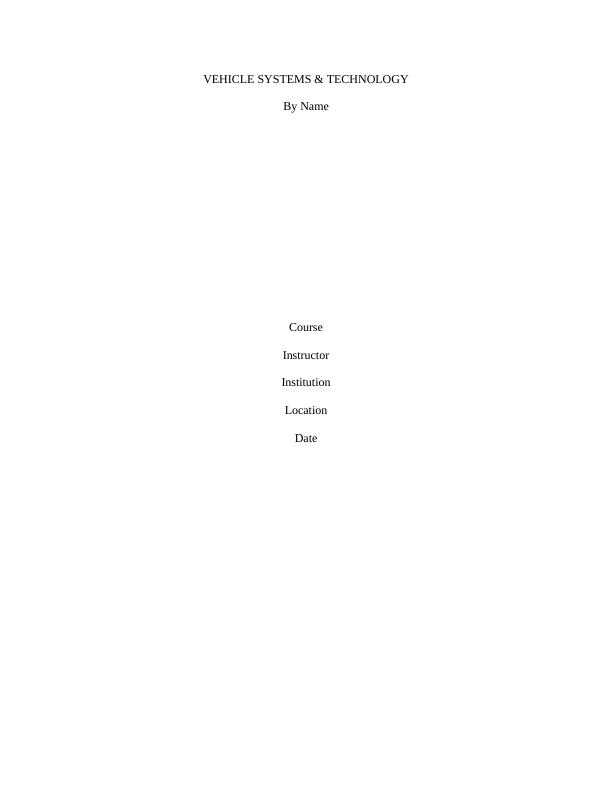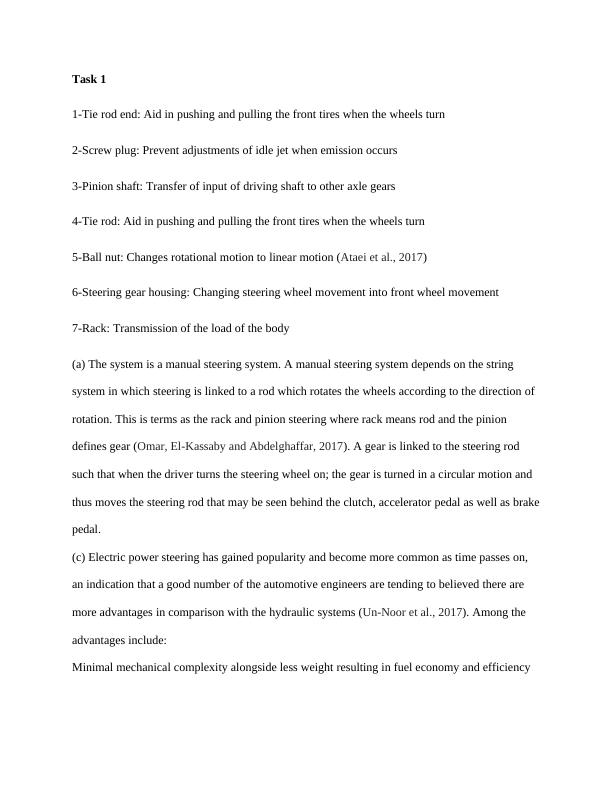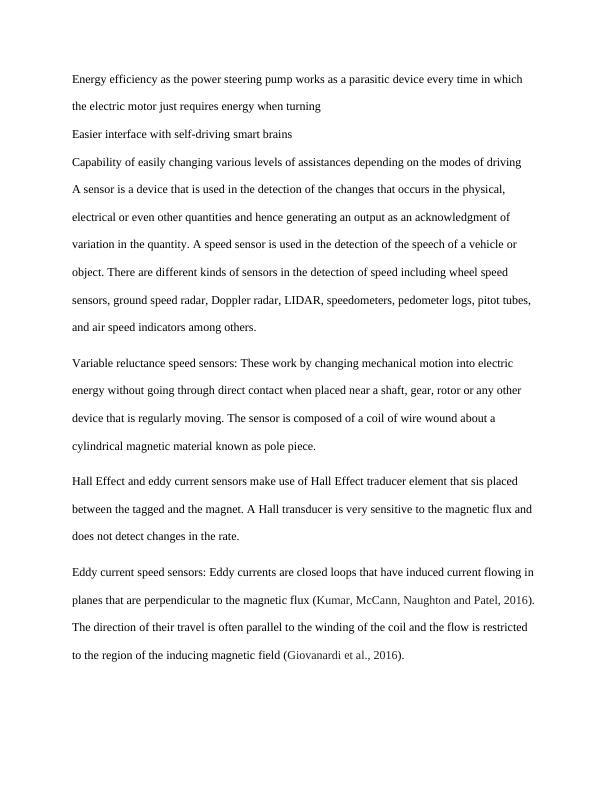Vehicle Systems & Technology
This assignment is about explaining the principles of operation and identifying major components of an advanced power steering system and understanding vehicle electronic power steering and active suspension system.
9 Pages1712 Words33 Views
Added on 2023-01-19
About This Document
This document provides information about vehicle systems and technology, including steering systems, suspension systems, and torque sensing. It explains the operation of different components and discusses the advantages of electric power steering. The document also covers various types of speed sensors used in vehicles. Additionally, it includes testing procedures for torque sensing and common faults in vehicle systems. Find study material and solved assignments on Desklib.
Vehicle Systems & Technology
This assignment is about explaining the principles of operation and identifying major components of an advanced power steering system and understanding vehicle electronic power steering and active suspension system.
Added on 2023-01-19
ShareRelated Documents
End of preview
Want to access all the pages? Upload your documents or become a member.
Managing Activities: Steering Systems and Suspension Systems
|9
|1322
|333
MES412 - Steering System of a Vehicle - Questions Answers
|12
|2298
|84



